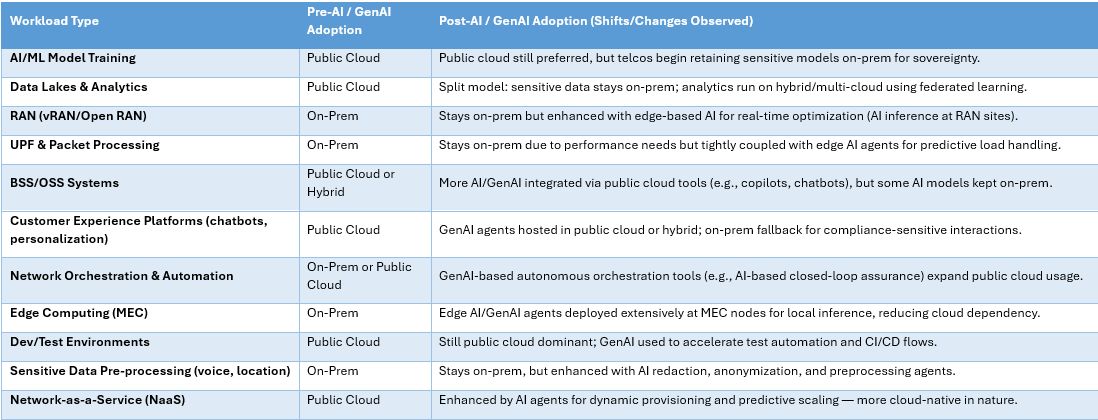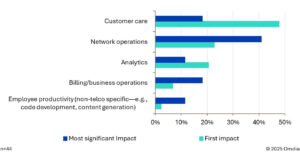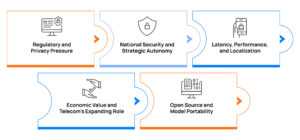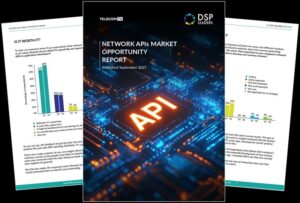As AI and GenAI (including agentic AI) continue to mature, they are no longer just enhancing intelligence within telecom networks — they are redefining the very foundation of how and where network workloads are hosted and managed.
In my previous post, I explored how telecom operators are embracing a hybrid cloud strategy — combining the strengths of on-premises infrastructure with the scalability of public cloud. This shift is driven by the need to balance performance, agility, and regulatory compliance.
But the real question now is:
What tangible impact will this have on the telco infrastructure ecosystem?
Understanding this will be key to shaping future-ready architectures.
What’s Changing?
Let’s start with AI/ML model training — it has traditionally thrived in the public cloud. But now, we’re seeing telcos selectively keep sensitive models on-prem to protect sovereignty and control. Similarly, data lakes and analytics, which used to live almost exclusively in public clouds, are moving toward hybrid architectures — keeping sensitive data local while using federated learning models to run cloud-based analytics.
On the network infrastructure side, functions like vRAN, UPF, and edge computing (MEC) remain rooted on-prem due to performance demands. But these are no longer isolated systems — they’re becoming smarter with AI inference running at the edge to optimize traffic, latency, and efficiency in real time.
Meanwhile, customer experience systems, OSS/BSS, orchestration layers, and Dev/Test environments are leveraging GenAI agents in the public cloud to boost agility, introduce autonomous workflows, and scale faster — while maintaining fallback provisions for on-prem control when compliance or latency requires it.
What Does This Mean for Telcos?
We’re moving into a world of:
- Workload decentralization — from central core to distributed edge.
- Hybrid intelligence — where training happens in the cloud, and inference lives at the edge.
- Compliance-conscious GenAI — with on-prem deployments becoming the norm in regions like the EU.
- AI-native system architectures — making legacy modernization a necessity, not a choice.
The telco cloud is no longer just a platform — it’s becoming an intelligent, adaptive fabric, optimized for both performance and autonomy. For telecom leaders, the key is to design cloud strategies that are AI-aware, compliance-aligned, and edge-ready.
As we move forward, I’d love to hear from telecom leaders:
- How are you prioritizing workload placement as AI-driven use cases scale across the telecom network?
- What steps are you taking to ensure your cloud strategy aligns with long-term autonomy, compliance, and performance needs?






Be First to Comment